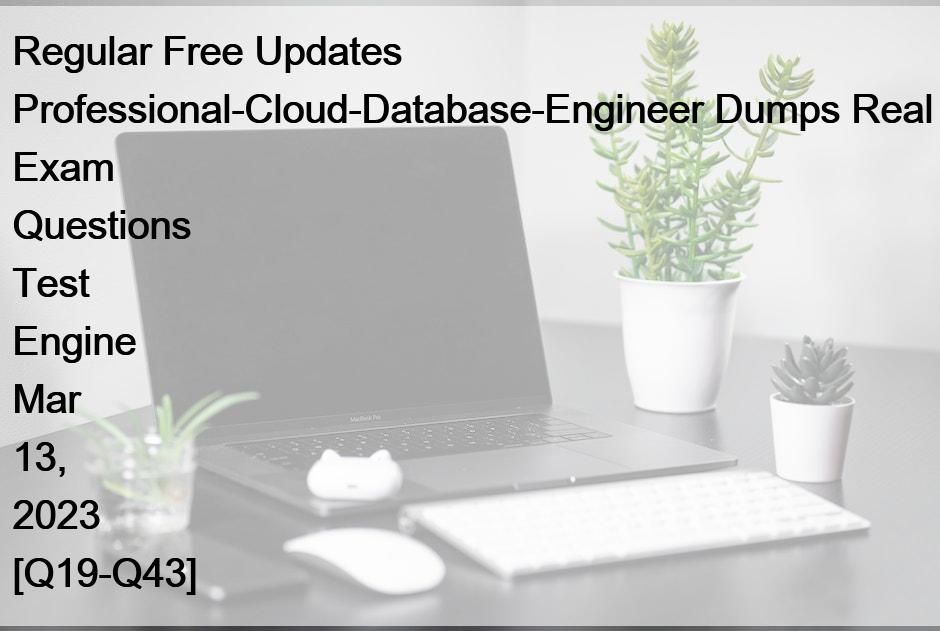|
Exams Labs Braindumps https://blog.examslabs.com/2023/03/regular-free-updates-professional-cloud-database-engineer-dumps-real-exam-questions-test-engine-mar-13-2023-q19-q43/ Export date: Tue Feb 18 22:21:25 2025 / +0000 GMT |
||||||||||||||||||||||||
Regular Free Updates Professional-Cloud-Database-Engineer Dumps Real Exam Questions Test Engine Mar 13, 2023 [Q19-Q43] Regular Free Updates Professional-Cloud-Database-Engineer Dumps Real Exam Questions Test Engine Mar 13, 2023 Practice Test Questions Verified Answers As Experienced in the Actual Test! Google Professional-Cloud-Database-Engineer Exam Syllabus Topics:
Pass Google Professional-Cloud-Database-Engineer Exam in First Attempt Easily: https://www.examslabs.com/Google/Google-Cloud-Certified/best-Professional-Cloud-Database-Engineer-exam-dumps.html 1 |
||||||||||||||||||||||||
Links:
|
||||||||||||||||||||||||
|
Post date: 2023-03-13 15:42:00 Post date GMT: 2023-03-13 15:42:00 Post modified date: 2023-03-13 15:42:00 Post modified date GMT: 2023-03-13 15:42:00 |
||||||||||||||||||||||||
|
Export date: Tue Feb 18 22:21:25 2025 / +0000 GMT This page was exported from Exams Labs Braindumps [ http://blog.examslabs.com ] |